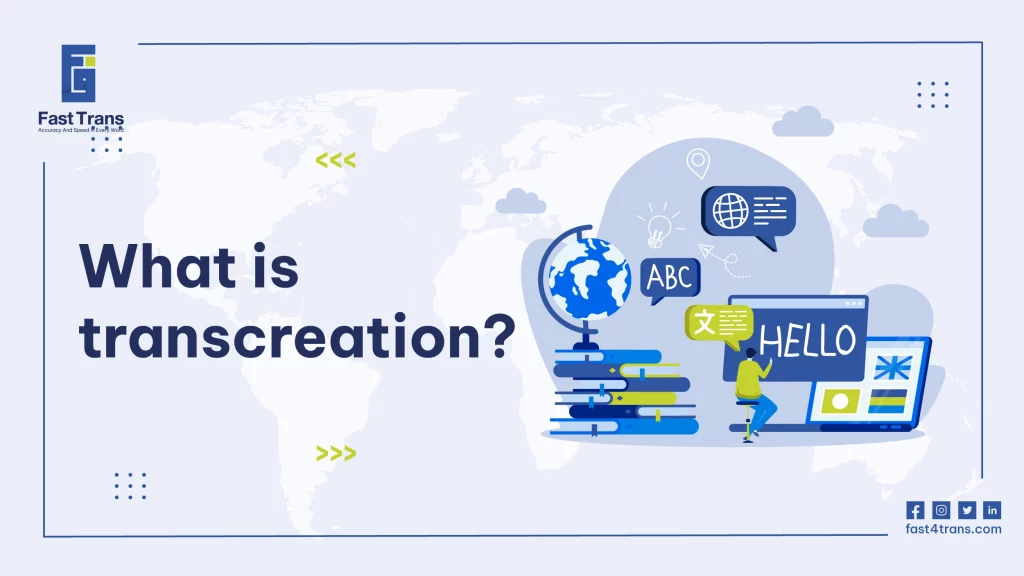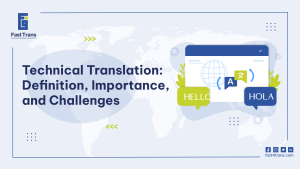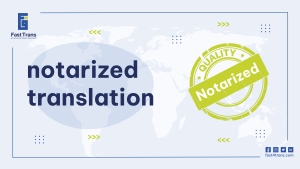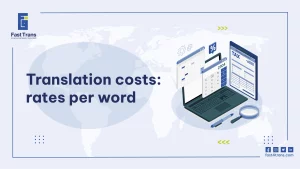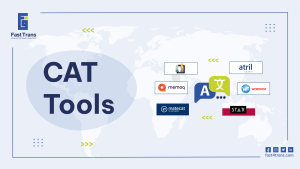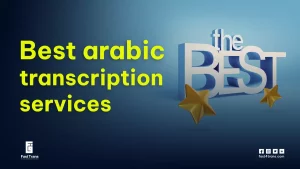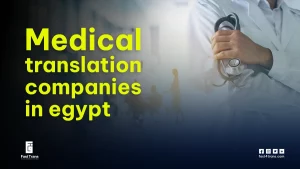Arabic transcreation is the art of adapting content to connect deeply with Arabic-speaking audiences, blending translation with creativity to preserve the original message’s emotional impact. It goes beyond simple language conversion, adjusting phrases, visuals, and cultural references to resonate with local values and norms.
By ensuring marketing materials, websites, and even films align with regional sensitivities, businesses can foster stronger connections and boost engagement, ultimately driving success in Arabic-speaking markets.
What is Arabic Transcreation?
Translation & Creation, how so?
Arabic transcreation is the creative translation of marketing material, such as slogans and advertisements, from one language to Arabic, ensuring the emotional or sensual impact of the original text is preserved.
Arabic transcreation combines translation, creation, and copywriting, among other things, with the goal of adapting content to appeal to Arabic-speaking cultural contexts.
As a result, with Arabic transcreation, it is expected that the target translation will differ significantly from the source. It involves reimagining and consistently adapting content to ensure its relevance in the Arabic market.
Successful Arabic transcreation requires a deep understanding of both the source and Arabic-speaking cultures, as well as clear communication between the transcreator and the client to ensure the final product aligns with the brand’s messaging and objectives. The goal is to achieve cultural relevance, without losing the desired emotional outcome. Arabic transcreation mirrors the intent of the source text but is not simply a direct translation into Arabic.
Examples of transcreation
Transcreation adapts content to resonate with cultural nuances, like how “Black Friday” becomes “White Friday” in MENA to avoid religious conflict, or Coca-Cola’s tailored names in Egypt to reflect local demographics. Similarly, Red Bull’s color adjustments in China align with local symbolism, and films, like Bush Mama, modify language to reflect regional struggles, such as using “colonizers” instead of “cops” in Palestinian translations.
Black and white Friday
One famous example of transcreation in Europe and the US, versus Middle Eastern countries is the Black Friday season.
The discount season in the US known as Black Friday happens to be White Friday in the MENA. This simple changing of the color White is out of respect to the culture of Muslim countries since the day Friday has a strong religious connotation. It is the day when Muslims go to afternoon prayer at the mosque, and it has many positive religious aspects to it. The color black is often used for negative connotations in the MENA, unlike white which is associated with light, angels, goodness, peace, etc.
Imagine how one word can make such a huge difference, that’s exactly the power of transcreation.
Coca-Cola “Share a Coke” campaign
In 2011, everybody- especially young adults- was buying Coca-Cola bottles with their names on them. In the US and Australia the names on the bottles were something like Tom, Ben, Kylie, Michelle, and hundreds of other most popular names of young adults of the younger generation.
However, In a country like Egypt, the names were completely appropriated to the Egyptian people with a variety that encompasses names of older and younger generations like Mohamed, Omar, Salma, Mariam..etc.
The examples are plenty.
You can check this article by East Media written about the transcreation of Red Bull in China, and how colors affect advertising in China.
The energy drink company made a smart move by changing the colors of their cans in China to yellow, red, and black which translates to good fortune in the Chinese culture.
Transcreation in Film
Aside from the marketing world, transcreation has a special and exciting place in the film industry. It could mean changing character names, settings, or even the film title to suit the audience.
One personal experience with transcreation in film was with the film Bush Mama 1979. It’s about African American people’s never-ending psychological, physical, and material struggles and marginalization in the US.
Firstly, the film was translated into the Palestinian dialect, not standard Arabic like most films in Egyptian theatres.
So many words were translated to entirely different meanings in Palestinian, with the effect of making parallels between the struggle of the characters in the film, and the struggle of the Palestinian people.
For example: words like Police or Cops were translated to ‘colonizers’
Why Use Arabic Transcreation for Your Website?
For businesses today, websites have become a substitute for physical on-site presence. They represent the online presence that matters in our digital world.
For this reason, Arabic transcreation for websites is crucial since it attracts visitors from different parts of the world, particularly those who speak Arabic and live within various cultural contexts. A website targeting the United States can differ significantly in design and content from a website aimed at customers in Saudi Arabia or the UAE.
Arabic transcreation in websites involves optimizing them for the right keywords:
- Transcreating headlines, slogans, and other content to resonate with Arabic-speaking audiences.
- Ensuring consistency with brand image, tone of voice, and emotions while maintaining cultural relevance.
- Being mindful of culturally sensitive elements (expressions, idioms, colors, and cultural references) to avoid miscommunication or offense.
Essential Skills for Arabic Transcreation
Essential skills for Arabic transcreation include fluency in both the source and target languages, cultural awareness, and adaptability to regional dialects. A transcreator must also be creative, detail-oriented, knowledgeable about the Arabic market, technically proficient, and capable of strong collaboration.
1. Fluency in Both Source and Target Languages
A solid command of both the source and target languages is fundamental. The transcreator must be fluent not only in Arabic but also in the language of the original content. Whether it’s English, French, or any other language, understanding the subtleties, idiomatic expressions, and nuances of both languages is essential for accurately capturing the tone and meaning of the content. This fluency allows the transcreator to maintain the integrity of the message, even when adapting it for a different cultural context.
2. Cultural Sensitivity and Awareness
Arabic-speaking communities span across many countries with diverse cultural norms, values, and traditions. Therefore, cultural sensitivity is a key aspect of Arabic transcreation. The transcreator must understand the cultural nuances and regional variations within the Arab world to avoid offending or alienating the audience. This may include adjusting references, metaphors, humor, or even visual elements to ensure they are culturally appropriate.
For instance, a marketing slogan that works in one Arab country may not have the same impact in another due to regional dialects or cultural taboos. A transcreator should be adept at identifying and addressing these differences to make sure the content feels natural and authentic to the target audience.
3. Adaptability to Regional Variations
Arabic is a language that is spoken in various dialects, such as Levantine, Gulf, Egyptian, Maghrebi, and others. These dialects can significantly vary in vocabulary, tone, and style. An essential skill for Arabic transcreation is the ability to adapt the content to the specific dialect of the target audience.
For example, a commercial targeting a Saudi audience will differ in tone and language from one aimed at Egyptians or Moroccans. Transcreators should be well-versed in these regional differences and know how to adjust content to suit the specific audience, whether it’s formal Arabic (Modern Standard Arabic) or colloquial dialects.
4. Creativity in Messaging
Transcreation often involves creative thinking, especially when working with content that includes idiomatic expressions, jokes, or cultural references that do not directly translate into Arabic. The transcreator must creatively adapt these elements to maintain their intended impact while ensuring the message aligns with the target culture’s expectations.
For example, an advertising slogan that plays on words in English may need to be reimagined in Arabic, finding new wordplay or expressions that evoke the same emotion or response. The goal is not to translate literally but to craft a message that feels organic and effective in the new language and culture.
5. Attention to Detail
Accuracy is critical in transcreation, especially when dealing with technical content, legal documents, or marketing materials. A transcreator must pay close attention to detail, ensuring the message is not only culturally appropriate but also precise in terms of the original meaning. Misunderstandings or errors in technical terminology can have serious consequences, so a high level of attention to detail is vital.
In Arabic transcreation, particular attention must also be paid to grammar, syntax, and punctuation. Arabic sentence structure can differ significantly from other languages, and it’s important to ensure that the transcreated content flows naturally and remains grammatically correct.
6. In-depth Knowledge of the Arabic Market
To transcreate effectively, a transcreator must have a strong understanding of the Arabic market, including consumer behavior, trends, and preferences. Whether the content is for advertising, social media, or e-commerce, understanding the local market dynamics is key to creating content that resonates.
For instance, an advertisement for a luxury brand aimed at the UAE market will need to reflect the country’s affluence and aspirations, whereas a similar ad targeting a more budget-conscious market may need to adjust its messaging. A transcreator’s insight into these market dynamics will ensure that the content is both relevant and appealing to the target audience.
7. Technical Proficiency with Tools and Platforms
Transcreators should be comfortable with various tools and platforms, from translation memory software to desktop publishing programs. This is particularly important when adapting content for digital platforms, such as websites, mobile apps, or social media.
Understanding the technical constraints of these platforms, such as character limits or formatting requirements, is also crucial. Arabic text, for instance, requires special consideration for right-to-left (RTL) text orientation, which can affect layout and design. Transcreators should be familiar with these technical aspects to ensure a seamless adaptation of content.
8. Strong Communication and Collaboration Skills
Lastly, successful transcreation often involves close collaboration with clients, marketers, designers, and other stakeholders. The transcreator needs strong communication skills to discuss nuances, share insights, and work together with the team to achieve the desired outcome. This collaborative approach ensures that the final transcreated product aligns with the brand’s goals and the cultural expectations of the audience.
Where is Arabic transcreation used?
Arabic transcreation is used in video games, websites, mobile apps, advertisements, and films to tailor content for Arabic-speaking audiences, ensuring cultural relevance and engagement. It adapts narratives, visuals, and messaging for optimal user experience and business impact in Arabic markets.
1. Video Games
Arabic video game transcreation is an exciting and complex process. It involves changing many aspects of the game narratives, like character names, dialogue, names of props, etc. All of this is done to ensure an entertaining and inclusive experience for Arabic-speaking gamers.
2. Websites (Landing Pages)
As previously mentioned, websites are one popular type of transcreation. A website targeted to Arabic-speaking audiences should have its content optimized to make the right impression on the customer and encourage them to make the choice of purchasing from your business.
Read more: Website Localization for Global Expansion
3. Mobile Applications
Similar to websites, mobile applications are crucial landing points for potential Arabic-speaking customers. At first glance, it might be tempting to rely on a fast and cost-effective machine translation for the app; however, machine translation is not optimal when translating cultural contexts, especially for the Arab world.
Read more: What is Software Internationalization?
4. Advertisements and Ad Copies
When launching a new business or product in Arabic-speaking markets, well-written advertising can save you lots of trouble. There are plenty of examples where big brands have failed terribly at their advertising campaigns, and many of them showcase weak contextualization. This could have been avoided with Arabic transcreation and localization services.
5. Films and Audiovisual Content
In our globalized world, visual content like films or TV shows is no longer restricted to one audience. Thanks to online streaming services like Shahid or Netflix, visual content is made accessible worldwide.
Consequently, Arabic transcreation steps in to make this accessibility error-free and suitable for Arabic-speaking audiences.
Read more: How to translate content for social media?
The importance and Benefits of Arabic transcreation
Arabic transcreation is essential for businesses entering Arabic-speaking markets, ensuring cultural sensitivity and brand identity alignment. By tailoring messages to local contexts, brands can foster stronger connections, improve customer engagement, and boost profitability.
1. Cultural Sensitivity
Brands expanding their business in Arabic-speaking regions need to be sensitive to the unique cultures and traditions of their target markets. This requires in-depth market research to understand the preferences, values, and socio-economic contexts of Arabic-speaking customers. After conducting thorough research, Arabic transcreation is implemented through close collaboration between transcreators, marketers, and business owners to ensure the brand image remains intact while effectively communicating with the audience in an appropriate and culturally relevant manner.
By doing so, brands can successfully enter Arabic-speaking markets and quickly gain the trust of local customers.
2. Delivering Brand Image and Identity
Since languages differ, the way a brand is presented in one language will naturally differ from how it is presented in another. This is especially true for Arabic, where linguistic and cultural differences are pronounced. Many businesses now rely on Arabic transcreation to adapt their slogans and messages, ensuring they resonate with Arabic-speaking audiences without losing their impact.
Mistranslating slogans in Arabic has led to humorous or awkward outcomes, such as when a well-known brand’s slogan was poorly translated into Arabic, causing confusion. A successful Arabic transcreation example is the global brand Nike, whose iconic ‘Just Do It’ slogan was transcreated into Arabic as “افعلها” (F‘alha), which captures the same motivational essence for Arabic speakers.
3. Profit
By applying Arabic transcreation, businesses ensure that their messaging resonates deeply with Arabic-speaking customers. When the brand’s tone and identity are adapted appropriately for the local culture, it builds stronger connections with consumers. As a result, customers are more likely to engage with and trust the brand, leading to higher customer acquisition and, ultimately, increased revenue.
Read more: How Translators Use Context for Accurate Translations?
Transcreation vs localization: what’s the difference?
At this point, transcreation sounds quite similar to localization, right?
It’s true that both of them have things in common, yet we can draw some differences to set both processes apart from each other.
Transcreation: The creative process that combines translation and creation of content with the goal of resonating with the target audience. Transcreators work with the marketing team, content writers, and copywriters.
Localization: In essence, localization also concerns itself with adapting content to resonate with different audiences who live in other countries in the world, and speak different languages. It concerns itself with UI technicalities like currencies, product measurements, date, and number formats.
It is not only written content that localizers work with, they also give feedback on product design, whether or not it suits that target audience.
read more about how Transcreation Differs from Translation
Steps in the Arabic Transcreation Process
The Arabic transcreation process involves adapting content for SEO by ensuring accurate cultural context, emotional resonance, and regional preferences, while maintaining linguistic integrity. Key steps include understanding the original message, refining language, and testing for audience feedback before final localization.
1. Understanding the Original Content
The first and most crucial step in the transcreation process is to fully understand the source content. This goes beyond merely reading the text—it requires an in-depth understanding of its tone, purpose, and target audience. For example, an advertisement, a website, or a product description might be written in a light, playful tone, while a legal document would require a more formal approach.
2. Cultural Research and Contextual Adaptation
Arabic-speaking regions are incredibly diverse, with a vast array of cultural and social norms. A message that works in one Arabic-speaking country might not resonate in another. Transcreation requires a deep dive into the cultural context of the target region. For example, while humor might be an essential part of a marketing campaign in one region, it may be seen as inappropriate in another.
3. Rewriting the Content with Emotional Integrity
Once the transcreator has an understanding of the original message and the local cultural nuances, the next step is to begin reworking the content. The goal is to preserve the emotional appeal, creative intent, and impact of the original text. This phase is more than just translating words—it’s about finding equivalent expressions, metaphors, and idioms that will resonate with the target audience.
4. Refinement and Linguistic Accuracy
The next step involves ensuring the language is accurate, fluent, and grammatically correct. Arabic is a highly nuanced language, with various rules regarding grammar, syntax, and vocabulary. It is essential to ensure that the message reads naturally and doesn’t feel awkward or stilted. This stage often requires the expertise of a professional linguist with a deep understanding of Arabic grammar.
5. Testing and Feedback
Once the transcreated content has been written, it’s essential to test it with a small group of native speakers or the target audience. This helps identify any cultural missteps, awkward phrasing, or other issues that might have been missed in the previous steps. This testing phase is particularly important in marketing and advertising, where the emotional impact of the content can influence consumer behavior.
6. Final Proofreading and Quality Assurance
After incorporating feedback from the testing phase, the final step in the transcreation process is proofreading and quality assurance (QA). This is where the transcreated content is meticulously checked for errors, inconsistencies, and final tweaks to ensure that everything flows smoothly.
7. Localization for Regional Variations
Arabic is spoken across a wide range of countries, each with its own local preferences and nuances. This step involves tailoring the transcreated content to a specific region or market, making further adjustments to account for variations in dialect, tone, and even colors or images used.
Fast-trans Transcreation services
Fast Trans prides itself on being one of the leading translation companies in transcreation and localization services.
Over the years, we have handled big and ambitious clients like EMAAR, ZED International, ACT, Orascom development, and Etisalat, who have wide presence in the market for decades. Our team is highly skilled in handling a wide array of translation services, delivering impeccable quality at a competitive price!
Fast Trans provides certified transcreation or creative translation in more than 215 languages. We strive to help you unlock the potential of your global audience.
Conclusion
Arabic transcreation is the process of adapting content, such as advertisements and marketing materials, to resonate with Arabic-speaking audiences while preserving the emotional impact of the original message. It blends translation, creative writing, and cultural adaptation to ensure that the content is not just linguistically accurate but also culturally relevant. This may involve significant changes to the text, such as reworking slogans, modifying images, or altering references, to align with local values, norms, and preferences.
For businesses targeting Arabic-speaking markets, transcreation plays a critical role in maintaining brand identity and fostering a deeper connection with customers. It ensures that marketing efforts are culturally sensitive and engaging, enhancing the chances of successful customer acquisition. Whether for websites, advertisements, or films, Arabic transcreation helps businesses avoid potential pitfalls that could arise from simple translation errors, thereby increasing their appeal and profitability in diverse Arabic-speaking regions.

